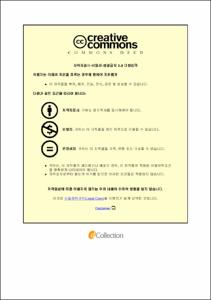중국 민영 양로서비스산업의 현황과 운영모델에 관한 연구
- Alternative Title
- Study on the Current Situation and Operating Models of Chinese Private Elderly Service Industry
- Abstract
- In the 21st century, China has become the country with the largest number of elderly people in the world due to an increasingly severe population aging. China has entered the ranks of aging countries since 2000 and the number of elderly aged over 60 as of the end of 2018 reached 249 million and it is forecasted to exceed 400 million in 2030. The aging population has brought many problems and challenges to the country and society, but from a different perspective, it has also brought important opportunities for the development of Chinese elderly service industry.
Along with the promotion of urbanization and economic growth in China, the home care function tends to be gradually weakened as the perceptions of family composition and care are changing. In addition to this, not only the financial burden of government is aggravated due to increased number of elderly but also the government's efficiency of service has been lowered day by day. In order to solve these problems, other solutions other than home and government are inevitable.
After the reform and opening, the Chinese government began to actively encourage private sector to enter the elderly service industry, China's old-age care service gradually shifted from family old-age care to social old-age care, and developed in the direction of industrialization and marketization.
With the entry of the private sector into the elderly service industry, elderly service have improved in both supply and service quality, and led the marketablization of elderly service industry. Market competition has created a variety of emerging elderly service models such as smart-type elderly service industry, cultural elderly service industry, medical care and elderly care model(medical & nursing), old-age real estate model, etc.
Firstly, this thesis uses literature research method to deeply analysis the related concepts and backgrounds of the private elderly service industry, the development history, characteristics, new development trends and supply status of the private elderly service industry. On this basis, the case analysis method and literature research method are used to further analyze the operating model. This article selects several representative operating models in China, which are the medical care and elderly care model, the smart elderly care model and the residence pension model. A brief overview of the content of each model, followed by categorizing each model by collating and summarizing existing literature. Based on each type, the practice examples of some elderly service institutions are analyzed, and each model is analyzed by SWOT analysis. The conclusion is a brief summary of the whole thesis, and look forward to the future development direction of private elderly service industry, which can be further used for reference by the domestic enterprises and organizations to participate in the development of retirement service industry.
- Issued Date
- 2020
- Awarded Date
- 2020. 2
- Type
- Dissertation
- Publisher
- 부경대학교
- Alternative Author(s)
- 양채원
- Affiliation
- 부경대학교 대학원
- Department
- 대학원 경제학과
- Advisor
- 서석흥
- Table Of Contents
- 제1장 서론 1
제1절 연구의 배경 1
제2절 연구의 필요성과 목적 3
제3절 기존연구에 대한 검토 6
제4절 연구방법 및 논문의 구성 8
1. 연구방법 8
2. 논문의 구성 9
제2장 민영 양로서비스산업의 개념과 등장배경 12
제1절 민영 양로서비스산업의 개념 12
1. 양로산업 12
2. 양로서비스 15
3. 민영 양로서비스산업 16
제2절 민영 양로서비스산업의 등장배경 17
1. 고령화 사회의 진입 17
2. 전통적인 부양방식의 변화 및 독거노인의 증가 20
3. 다원화된 양로서비스에 대한 수요 증가 22
4. 정부 복지예산의 한계 23
제3장 민영 양로서비스산업의 현황 25
제1절 민영 양로서비스산업의 발전과정 25
1. 국가 및 공공 위주의 사회 복지단계(1978년 이전) 25
2. 민영 양로서비스산업의 맹아단계(1979년~1999년) 27
3. 민영 양로서비스산업의 급속한 발전단계(2000년 이후) 29
제2절 민영 양로서비스산업의 특징 및 새로운 추세 32
1. 민영 양로서비스산업의 특징 32
2. 민영 양로서비스산업의 새로운 추세 33
제3절 민영 양로서비스산업의 공급현황 37
1. 양로산업의 규모 37
2. 양로서비스기관의 현황 39
3. 민영 양로서비스기관의 비중 42
제4장 민영 양로서비스산업의 운영모델 46
제1절 “의료+양로서비스”의 의양(医养)결합 모델 46
1. 의양결합 모델의 개요 46
2. 의양결합 모델의 대표사례 51
3. 의양결합 모델의 평가 56
제2절 “인터넷+양로서비스”의 스마트양로 모델 59
1. 스마트양로 모델의 개요 59
2. 스마트양로 모델의 대표사례 64
3. 스마트양로 모델의 평가 68
제3절 “여가+양로서비스”의 여행·거주양로(旅居养老) 모델 72
1. 여행·거주양로 모델의 개요 72
2. 여행·거주양로 모델의 대표사례 76
3. 여행·거주양로 모델의 평가 79
제5장 결론 - 요약 및 전망 84
제1절 요약 84
제2절 전망 88
참고문헌(參考文獻) 90
- Degree
- Master
- Files in This Item:
-
-
Download
 중국 민영 양로서비스산업의 현황과 운영모델에 관한 연구.pdf
기타 데이터 / 1.39 MB / Adobe PDF
중국 민영 양로서비스산업의 현황과 운영모델에 관한 연구.pdf
기타 데이터 / 1.39 MB / Adobe PDF
-
Items in Repository are protected by copyright, with all rights reserved, unless otherwise indicated.